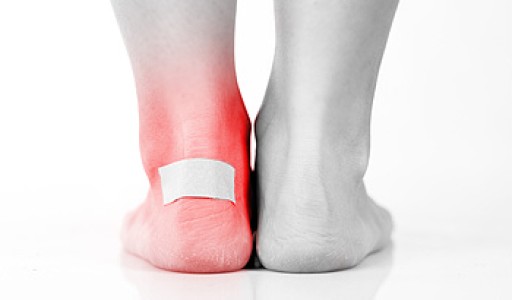 A small area on the skin that is filled with liquid and resembles a bubble is referred to as a blister. Its function is to protect the damaged skin while new skin grows, and will gradually drain when the body no longer needs it. A blister often develops as a result of excessive friction from wearing shoes that do not fit correctly. Additionally, blisters can form from certain medical conditions, including psoriasis, frostbite, and eczema. An allergic reaction to an insect bite may cause a blister, or one may develop from specific types of chemicals. The blister can be protected by placing a bandage over it, as daily activities are completed. If you frequently develop blisters on your feet, please consult with a podiatrist who can provide you with reasons why and suggest correct preventative techniques.
A small area on the skin that is filled with liquid and resembles a bubble is referred to as a blister. Its function is to protect the damaged skin while new skin grows, and will gradually drain when the body no longer needs it. A blister often develops as a result of excessive friction from wearing shoes that do not fit correctly. Additionally, blisters can form from certain medical conditions, including psoriasis, frostbite, and eczema. An allergic reaction to an insect bite may cause a blister, or one may develop from specific types of chemicals. The blister can be protected by placing a bandage over it, as daily activities are completed. If you frequently develop blisters on your feet, please consult with a podiatrist who can provide you with reasons why and suggest correct preventative techniques.
Blisters may appear as a single bubble or in a cluster. They can cause a lot of pain and may be filled with pus, blood, or watery serum. If your feet are hurting, contact Terri Quebedeaux, DPM of Agave Podiatry . Our doctor can provide the care you need to keep you pain-free and on your feet.
Foot Blisters
Foot blisters are often the result of friction. This happens due to the constant rubbing from shoes, which can lead to pain.
What Are Foot Blisters?
A foot blister is a small fluid-filled pocket that forms on the upper-most layer of the skin. Blisters are filled with clear fluid and can lead to blood drainage or pus if the area becomes infected.
Symptoms
(Blister symptoms may vary depending on what is causing them)
- Bubble of skin filled with fluid
- Redness
- Moderate to severe pain
- Itching
Prevention & Treatment
In order to prevent blisters, you should be sure to wear comfortable shoes with socks that cushion your feet and absorb sweat. Breaking a blister open may increase your chances of developing an infection. However, if your blister breaks, you should wash the area with soap and water immediately and then apply a bandage to the affected area. If your blisters cause severe pain it is important that you call your podiatrist right away.
If you have any questions, please feel free to contact our offices located in Seguin, LaVernia, Gonzales, and Lockhart, TX . We offer the newest diagnostic and treatment technologies for all your foot care needs.











